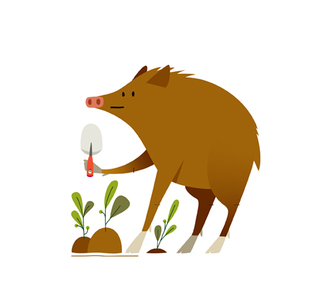
Alex Eben Meyer
Animals caring for forests
A new study led by Yale shows that animals play a key role in the recovery of tree species: they carry a wide variety of seeds into previously deforested areas.
The project examined forests in central Panama that were regenerating after being deforested, and then abandoned, 20 to 100 years ago. Researchers studied the proportions of tree species dispersed by animals and those dispersed by wind, gravity, or other methods. They found that a wide variety of animals, particularly flightless mammals, played important roles in seed dispersal. In tropical forests—which are vital to regulating the global climate and supporting plant and animal diversity—over 80 percent of tree species may be dispersed by animals.
To look, or not to look
Everyone has had a moment when we can’t quite meet another person’s eyes. But for those with autism spectrum disorder (ASD), it’s much harder. Professors Joy Hirsch and James McPartland have identified brain systems involved in that reduced pattern of eye contact.
Thanks to a new technology that can capture the brain images of two people looking at each other, their team was able to analyze brain activity during brief social interactions between pairs of adults. Each pair included one neurotypical participant and one with ASD. Both wore caps with sensors that sent light into the brain. The two looked at each other’s faces and made eye-to-eye contact, while the sensors recorded changes in the light signals, which delivered information about brain activity.
The ASD participants showed significantly less activity in a region of the brain involved with spatial attention and eye movements. The research opens up a better understanding of the neurobiology of autism, and neural mechanisms that drive social connections.
 loading
loading